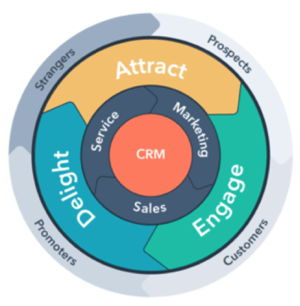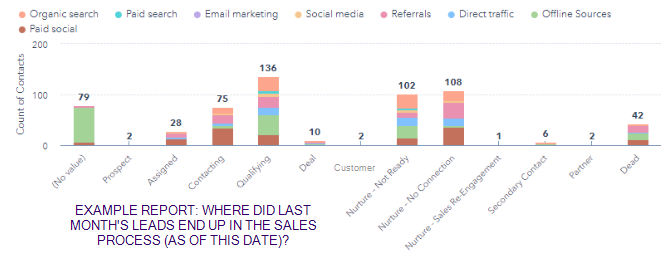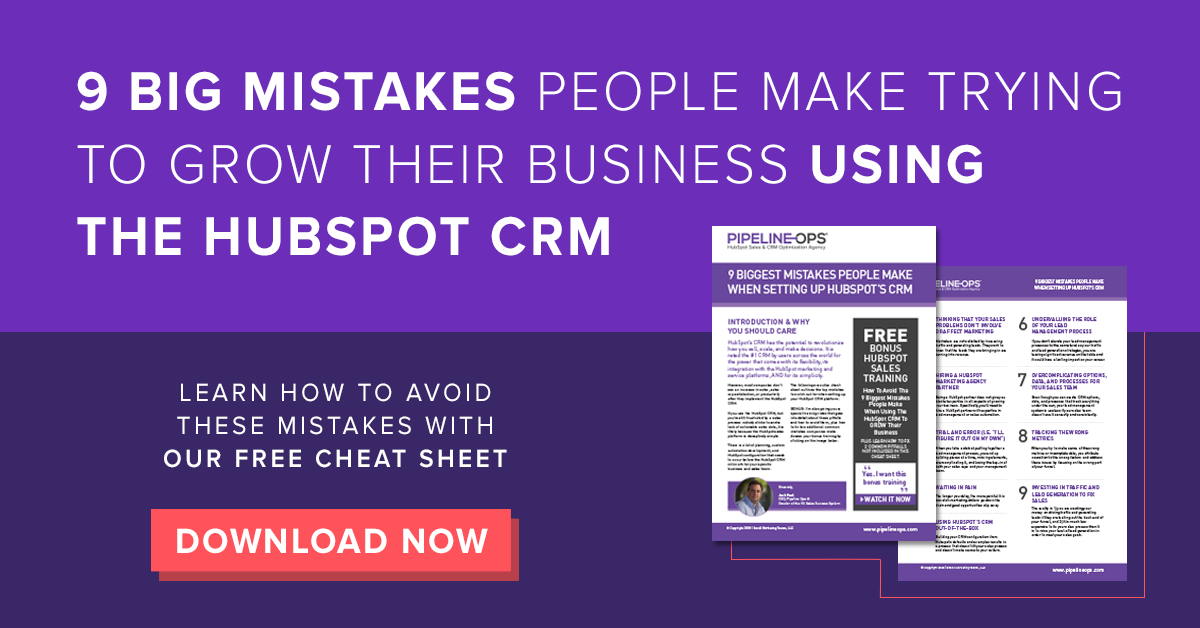Traditionally, marketing and sales departments have a friendly, but hands-off relationship. If there is a problem with your marketing strategy, sales stays out of it and marketing tries to fix it. If there is a sales problem, sales does not want marketing involved in the solution process.

Unfortunately, this dynamic is misleading and makes for an accountability nightmare in the following ways:
- Your marketing team’s approach to lead generation will mainly focus on quantity instead of quality. (“We need to deliver X amount of leads to sales each month. What they do with those leads is their problem.”)
- Your sales team will question the quality of the leads coming from marketing. (“We got X leads this month from marketing and they’re all crap. How can we be expected to close these?”)
- Your revenue will suffer because the two teams are working unilaterally (with different goals in mind) on what should be a shared experience of the customer’s journey.
The truth is that marketing has a vested interest in improving the sales process. While they are often left out of the conversation, more leads converting into sales makes marketers look like rockstars.
FREE CHEAT SHEET: 9 Mistakes People Make When Trying to Increase Sales Using the HubSpot CRM
So, how do you avoid the notion that marketing does not belong in conversations about fixing your sales process? You’ll find the answer in aligning your sales and marketing teams, also called smarketing.
What is Smarketing?
Smarketing is the process of getting your sales and marketing teams on the same page regarding expectations, processes, and the data that is important. According to research from MarketingProfs, organizations with tightly aligned sales and marketing teams experience 36% higher customer retention rates.
The underpinning of your marketing and sales alignment plan relies on how you implement closed-loop reporting in your HubSpot CRM. In this article, I’ll walk through how to use this approach in your business.
What is Closed-Loop Reporting?
If you set up your business's HubSpot CRM correctly, you have the ability to track prospective customers from leads generated through your marketing and sales pipelines and to recognize which efforts were successful (in order to repeat and optimize them in the future). This type of customer lifecycle analytics framework is called "closing the loop."

Why is Closing the Loop Important to Aligning Marketing and Sales?
Without closed-loop reporting, it’s impossible to see which of the marketing efforts brought visitors to the website that converted into leads and later, became customers.
According to HubSpot’s 2020 Not Another State of Marketing Report, the most common measurement of success for content marketing is total sales. Closing the loop shows marketers what they’re doing right so that can focus on the campaigns that bring the most sales revenue.
On the sales side, closed loop reporting highlights where leads are the hottest, or easiest to target. This optimization is the holy grail for salespeople who, of course, want to close deals as quickly and easily as possible.
How to Approach Closed Loop Reporting in Your HubSpot CRM
Before you begin to set up closed-loop reporting in HubSpot, it’s important to understand HubSpot’s flywheel concept (figure shown below). The flywheel represents your customer’s journey as your company attracts, engages, and delights them.

As you can see, the flywheel is a circle (with no beginning or end). If you start thinking about your sales and marketing teams and their data as part of this circle, accountability is centralized. Marketing’s job doesn’t stop with lead generation and sales doesn’t start when a lead enters the system. Each team is working simultaneously to spin the flywheel and dependent on the other for momentum.
How to Set up Closed Loop Reporting in Your HubSpot CRM
Closing the loop is an easy process if your team has your HubSpot’s CRM set up correctly. By combining your lead generation data with where a lead is in the sales process, your marketing team gets actionable information about which messages, channels, and formats result is higher quality leads.
For instance, if only 100 of the 400 leads you generated last month reached the lead status of “qualifying” in the sales process, that data in your HubSpot system tells the marketing department that they need to optimize the lead quality by looking at the source, messaging, and touchpoints.
This is important because it identifies which marketing activities are converting qualified leads. This is information that the marketing team cannot discern by themselves - it is made evident by marketing and sales working from the same lead management framework.

Setting up your CRM correctly to automate these steps is key so salespeople are not burdened with the task of collecting data. While the sales team is completing their everyday tasks, HubSpot is gathering intel behind the scenes of your CRM.
Making your sales reps’ tasks as simple as possible while gathering structured data and complex reports on the back end is the only way to ensure optimization in your sales process.
Using HubSpot reports, this valuable data can show both teams (sales and marketing) and management what is working and what is not in your process. Not only that, but according to research by InsideView in 2018, 43% of sales and marketing people said "lack of accurate/shared data on target accounts and prospects" was the biggest challenge when it comes to aligning sales and marketing departments.
So by using closed-loop reporting, you can actually further align your sales and marketing teams.
HubSpot CRM Closed Loop Reporting Takeaway
Every lead that comes into your CRM is an opportunity to attract, engage, and delight a customer. This collective goal is the same for your marketing and sales’ teams; there is no differentiation.
Using closed-loop reporting in your HubSpot CRM gives your sales and marketing teams the collaborative data they need to optimize their processes. Their shared accountability and alignment will be the key to turn more of your marketing spend into revenue.


